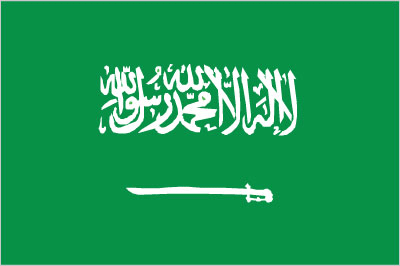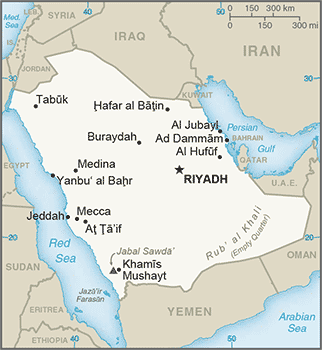Exporting to Saudi Arabia


Saudi Arabia Country Profile
Official Name (Local Language) Al Mamlakah al Arabiyah as Suudiyah
Capital Riyadh
Population 28,160,273
Currency Saudi Riyal
GDP $637.8 billion
Languages Arabic
Phone Dial In 966
Saudi Arabia Imports Profile
Imports ($m USD) 129,796
Number of Import Products 4,321
Number of Import Partners 172

Saudi Arabia Economic Statistics
Government Website | https://www.saudi.gov.sa/ |
| Sovereign Ratings | https://countryeconomy.com/ratings/saudi-arabia |
| Central Bank | Saudi Arabian Monetary Authority |
| Currency USD Exchange Rate | 3.75 |
| Unemployment Rate | 11.2% |
| Population below poverty line | NA |
| Inflation Rate | 4.4 |
| Prime Lending Rate | 2.5% |
| GDP | $637.8 billion |
| GDP Pro Capita (PPP) | $54,100 |
| Currency Name | Saudi Riyal |
| Currency Code | SAR |
| World Bank Classification | High Income |
| Competitive Industrial Performance | 29/138 |
| Corruption Perceptions Index | 57/180 |
| Ease of Doing Business | 92/190 |
| Enabling Trade Index | 67/136 |
Access trade, receivables and supply chain finance
We assist companies to access trade and receivables finance through our relationships with 270+ banks, funds and alternative finance houses.
Get StartedExporting to Saudi Arabia
Saudi Arabia is the largest economy in the Middle East and the richest Arab country. Saudi Arabia’s main imports are machinery and vehicles, with Japan as the top source for the latter and China, the US, and the UAE as other import sources. It has a sizable and steady trade surplus, thanks in large part to its fuel exports; however, growth has been slowly decreasing due to oil production cuts in recent years.
The government has been focused on fostering non-oil development and has enacted a number of business-friendly measures as a result, including a new set of laws that protect investors’ rights and reduce the cost of doing business. The Public Investment Fund (PIF), Saudi Arabia’s sovereign wealth fund, has been deploying capital to finance infrastructure megaprojects and to stimulate private sector investment. Non-oil growth is projected to be high this year, driven by the tourism, healthcare, and insurance sectors. However, measures to encourage diversification may hurt importers: companies are strongly encouraged and in some areas even required to purchase goods and services from domestic suppliers, and the government has set a goal for at least half of all defence materials used by the Saudi army to be produced locally by 2030.
The country’s official constitution is the Quran, and all government business must be Shari’a compliant. All banking, insurance and financial products must therefore be compatible with Islamic law. The absolute value of Sharia principles means foreign judgments or legal precedence can easily be overruled. Saudi Arabian government agencies are very rarely allowed to agree to international arbitration, and enforcement of foreign arbitration awards can also prove difficult. However, reforms passed in 2023 have made legal proceedings smoother and more consistent with international law.
Exporting to Saudi Arabia: What is trade finance?
Saudi Arabia sits as the fifth largest export economy in the world and is the forty-second most complex economy according to the Economic Complexity Index (ECI). It is the world’s main producer and exporter of petroleum products, and acts as the second largest oil producer after Russia. On average, Saudi Arabia exports around $600B of goods and imports around $150B, which results in a positive trade balance of around $450B. It is estimated that the GDP of Saudi Arabia is around $750B with a GDP per capita of around $50k.
When looking at products that are exported, the main items are crude petroleum, (around $520B), refined petroleum ($30B) and petroleum gas (around $12B) and propylene polymers (around $11B). The main countries of export are Asia (almost $200B), North and Central America ($54B), China ($48B), the United States (around $45B) and Japan (over $40B).
In terms of geography, Saudi Arabia borders the United Arab Emirates, Jordan, Iraq, the United Arab Emirates, Kuwait, Oman, Qatar and Yemen by land and Egypt, Eritrea, Bahrain, Sudan and Iran by sea.
Chart Showing GDP Growth Compared to rest of world
GDP Composition for Saudi Arabia
Agriculture
2.4%
Wheat, barley, tomatoes, melons, dates, citrus; mutton, chickens, eggs, milk
Industry
42.9%
Crude oil production, petroleum refining, basic petrochemicals, ammonia, industrial gases, sodium hydroxide (caustic soda), cement, fertilizer, plastics, metals, commercial ship repair, commercial aircraft repair, construction
Services
54.7%
Map
Top 5 Import Partners
| Country | Trade | % Partner Share |
| China | 18,841 | 14.52 |
| United States | 17,342 | 13.6 |
| Germany | 8,181 | 6.30 |
| Japan | 7,176 | 5.53 |
| United Arab Emirates | 6,930 | 5.34 |
Top 5 Import Products
| Export Product | Number |
| Automobiles with reciprocating piston engine di | 9.9% |
| Automobiles with reciprocating piston engine di | 3.3% |
| Transmission apparatus, for radioteleph incorpo | 2.7% |
| Other medicaments of mixed or unmixed products, | 2.1% |
| Aircraft parts nes | 1.7% |
Speak to our trade finance team
Local Partners
- All Topics
- Philippines Trade Resources
- Export Finance and ECA Topics
- Local Conferences



















